Acupuncture in the Treatment of Pain An Integrative Approach

Preț: 262,50 lei
Disponibilitate: nu mai face parte din ofertă
Autor: Marcus Backer, MD and Michael G. Hammes, MD
ISBN: 978-0-443-06869-0
Editura: Churchill Livingstone
Anul publicarii: 2010
Pagini: 560
DESCRIERE
The book delineates the potentials and limits of acupuncture in the treatment of pain in the context of a modern bio-psycho-social concept of pain therapy. This is realized by an integration of western and traditional Chinese medicine, with the aim to meet the respective other medicine system on the one hand and critical distance on the other.
The book consists of two parts. The first part (chapter 2-8) gives the background for both traditional Chinese concepts to pathogenesis, diagnosis and treatment of pain and basics of the conventional, western approach to pain treatment. The second part (chapter 9-17) gives detailed information for the integrative treatment of all common painful conditions. For every single indication conventional and traditional Chinese treatment options (including Chinese phytotherapy) are shown and the value of acupuncture, scientific data about its efficacy and its possible mode of action (in western-physiological terms) are discussed.
Key Features
• Attractive 2 colour design
• Written by a team of experts in the field
• Includes more than 175 2 colour illustrations
• Integrates western and traditional Chinese medicine
Table of Contents
Part I: The basics
1 Introduction
2 Pain from the western scientific medicine perspective
2. 1 Foundations
2. 2 Diagnosis of chronic pain
2. 3 General treatment guidelines for chronic pain
2. 4 Conventional pain treatment
2. 5 Western naturopathic approaches to pain treatment
3 Pain from the traditional Chinese medicine perspective
3. 1 Basic characheristics of traditional Chinese medicine
3. 2 Pathogenesis of pain
3. 3 The concept of Bi obturation
3. 4 Prevention
4 Diagnosis and differential diagnosis in TCM
4. 1 Perspectives in the West and East
4. 2 History taking
4. 3 Special physical examination
4. 4 Syndrome differentiation
4. 5 Correlation between western disease categories and syndrome pattern
4. 6 Significance of syndrome diagnosis in treatment
5 Guidelines for TCM treatment of pain
5. 1 Formulating treatment principles (Zhize)
5. 2 Treatment of the 'root' (Ben) and 'branches' (Biao)
5. 3 Treatment options
6 Acupuncture
6. 1 Definition
6. 2 Neurobiological mechanisms of action
6. 3 Indications
6. 4 Contraindications
6. 5 Undesired side-effects
6. 6 Techniques and practical application
6. 7 Treatment principles
6. 8 Warming the acupoints: moxibustion
6. 9 Related Techniques
7 Channels and important acupoints
7. 1 Channels and acupoints
7. 2 Acupoints from a western scientific point of view
8 Further treatment options in TCM
8. 1 Chinese Herbal Medicine
8. 2 Chinese Dietetics
8. 3 Tuina
8. 4 Qi Gong
PART II: Pain Syndromes
9 Head and face pain
9. 1 General principles
9. 2 Migraine
9. 3 Tension-type headache
9. 4 Analgesic-induced headache
9. 5 Cervicogenic headache
9. 6 Cluster headache
9. 7 Temporomandibular joint dysfunction
9. 8 trigeminal neuralgia
9. 9 Atype facial pain
9. 10 Symptomatic head and facial pain
10 Pain in the locomotor system
10. 1 General guidelines
10. 2 Cervicocephal syndrome
10. 3 Neck pain
10. 4 Cervicobrachial syndrome
10. 5 Shoulder pain (subacromial bursitis, calcific tendonitis)
10. 6 Supraspinatus tendinopathy and impingement syndrome
10. 7 Frozen shoulder
10. 8 Humeroradial and humeroulnar epicondylitis
10. 9 Tenovaginitis and tendinopathies
10. 10 Spondylogenic thoracic pain
10. 11 Chronic low back pain
10. 12 Ischialgia/sciatica
10. 13 Failed back surgery syndrome
10. 14 Piriformis syndrome
10. 15 Osteoarthritis of the hip
10. 16 Osteoarthritis of knee
10. 17 Achillodynia
10. 18 Osteoporosis
10. 19 Rheumatoid arthritis
11 Fibromyalgia syndrome
12 Visceral pain
12. 1 General guidelines
12. 2 Angina pectoris
12. 3 Functional cardiac pain
12. 4 Gastritis
12. 5 Functional dyspepsia
12. 6 Irritable bowel syndrome
12. 7 Chronic pelvic pain
13 Neuropathic pain syndrome
13. 1 General guidelines
13. 2 Carpal tunnel syndrome
13. 3 Meralgia paresthetica
13. 4 Intercostal neuroalgia
13. 5 Post-herpetic neuroalgia
13. 6 Polyneuropathy (PNP)
13. 7 Complex regional pain syndrome (CRPS)
13. 8 Central pain
13. 9 Stump and phantom limb pain
14 Pain due to vascular disease
14. 1 General guidelines
14. 2 Raynaud's syndrome
14. 3 Peripheral artery occlusive disease (PAOD)
15 Acupuncture in palliative care
15. 1 Introduction
15. 2 What is palliative care?
15. 3 Clinical aspects
15. 4 Summary
16 Psychovegetative complaints
16. 1 General guidelines
16. 2 Practical treatment of psychovegetative complaints
17 Psychosomatic aspects of pain therapy
18 Afterword
The book consists of two parts. The first part (chapter 2-8) gives the background for both traditional Chinese concepts to pathogenesis, diagnosis and treatment of pain and basics of the conventional, western approach to pain treatment. The second part (chapter 9-17) gives detailed information for the integrative treatment of all common painful conditions. For every single indication conventional and traditional Chinese treatment options (including Chinese phytotherapy) are shown and the value of acupuncture, scientific data about its efficacy and its possible mode of action (in western-physiological terms) are discussed.
Key Features
• Attractive 2 colour design
• Written by a team of experts in the field
• Includes more than 175 2 colour illustrations
• Integrates western and traditional Chinese medicine
Table of Contents
Part I: The basics
1 Introduction
2 Pain from the western scientific medicine perspective
2. 1 Foundations
2. 2 Diagnosis of chronic pain
2. 3 General treatment guidelines for chronic pain
2. 4 Conventional pain treatment
2. 5 Western naturopathic approaches to pain treatment
3 Pain from the traditional Chinese medicine perspective
3. 1 Basic characheristics of traditional Chinese medicine
3. 2 Pathogenesis of pain
3. 3 The concept of Bi obturation
3. 4 Prevention
4 Diagnosis and differential diagnosis in TCM
4. 1 Perspectives in the West and East
4. 2 History taking
4. 3 Special physical examination
4. 4 Syndrome differentiation
4. 5 Correlation between western disease categories and syndrome pattern
4. 6 Significance of syndrome diagnosis in treatment
5 Guidelines for TCM treatment of pain
5. 1 Formulating treatment principles (Zhize)
5. 2 Treatment of the 'root' (Ben) and 'branches' (Biao)
5. 3 Treatment options
6 Acupuncture
6. 1 Definition
6. 2 Neurobiological mechanisms of action
6. 3 Indications
6. 4 Contraindications
6. 5 Undesired side-effects
6. 6 Techniques and practical application
6. 7 Treatment principles
6. 8 Warming the acupoints: moxibustion
6. 9 Related Techniques
7 Channels and important acupoints
7. 1 Channels and acupoints
7. 2 Acupoints from a western scientific point of view
8 Further treatment options in TCM
8. 1 Chinese Herbal Medicine
8. 2 Chinese Dietetics
8. 3 Tuina
8. 4 Qi Gong
PART II: Pain Syndromes
9 Head and face pain
9. 1 General principles
9. 2 Migraine
9. 3 Tension-type headache
9. 4 Analgesic-induced headache
9. 5 Cervicogenic headache
9. 6 Cluster headache
9. 7 Temporomandibular joint dysfunction
9. 8 trigeminal neuralgia
9. 9 Atype facial pain
9. 10 Symptomatic head and facial pain
10 Pain in the locomotor system
10. 1 General guidelines
10. 2 Cervicocephal syndrome
10. 3 Neck pain
10. 4 Cervicobrachial syndrome
10. 5 Shoulder pain (subacromial bursitis, calcific tendonitis)
10. 6 Supraspinatus tendinopathy and impingement syndrome
10. 7 Frozen shoulder
10. 8 Humeroradial and humeroulnar epicondylitis
10. 9 Tenovaginitis and tendinopathies
10. 10 Spondylogenic thoracic pain
10. 11 Chronic low back pain
10. 12 Ischialgia/sciatica
10. 13 Failed back surgery syndrome
10. 14 Piriformis syndrome
10. 15 Osteoarthritis of the hip
10. 16 Osteoarthritis of knee
10. 17 Achillodynia
10. 18 Osteoporosis
10. 19 Rheumatoid arthritis
11 Fibromyalgia syndrome
12 Visceral pain
12. 1 General guidelines
12. 2 Angina pectoris
12. 3 Functional cardiac pain
12. 4 Gastritis
12. 5 Functional dyspepsia
12. 6 Irritable bowel syndrome
12. 7 Chronic pelvic pain
13 Neuropathic pain syndrome
13. 1 General guidelines
13. 2 Carpal tunnel syndrome
13. 3 Meralgia paresthetica
13. 4 Intercostal neuroalgia
13. 5 Post-herpetic neuroalgia
13. 6 Polyneuropathy (PNP)
13. 7 Complex regional pain syndrome (CRPS)
13. 8 Central pain
13. 9 Stump and phantom limb pain
14 Pain due to vascular disease
14. 1 General guidelines
14. 2 Raynaud's syndrome
14. 3 Peripheral artery occlusive disease (PAOD)
15 Acupuncture in palliative care
15. 1 Introduction
15. 2 What is palliative care?
15. 3 Clinical aspects
15. 4 Summary
16 Psychovegetative complaints
16. 1 General guidelines
16. 2 Practical treatment of psychovegetative complaints
17 Psychosomatic aspects of pain therapy
18 Afterword
Categorii de carte
-Comandă specială
-Edituri
-Promo
-Publicaţii Callisto
-Cărţi noi
-- 585,90 leiPRP: 651,00 lei
- 630,00 lei
- 1102,50 lei
Promoţii
-- 585,90 leiPRP: 651,00 lei
- 652,05 leiPRP: 724,50 lei
- 415,80 leiPRP: 472,50 lei

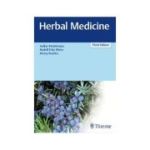
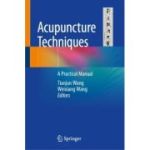
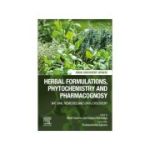



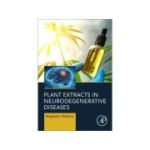
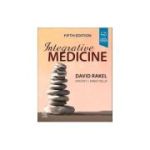

REVIEW-URI